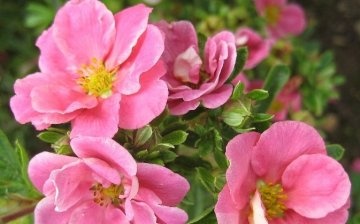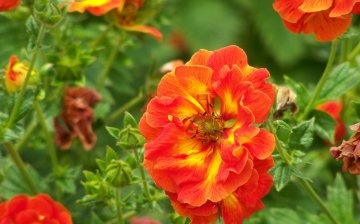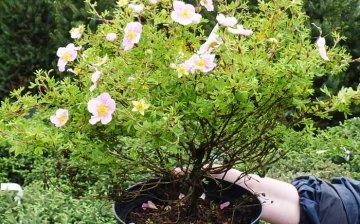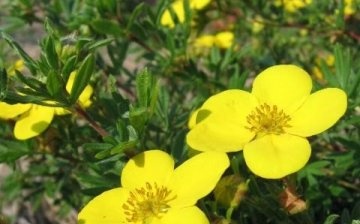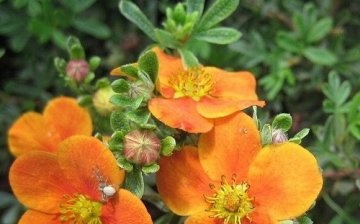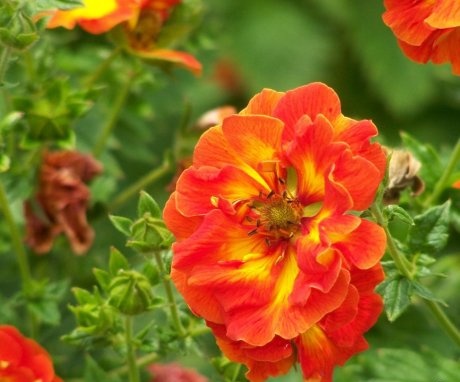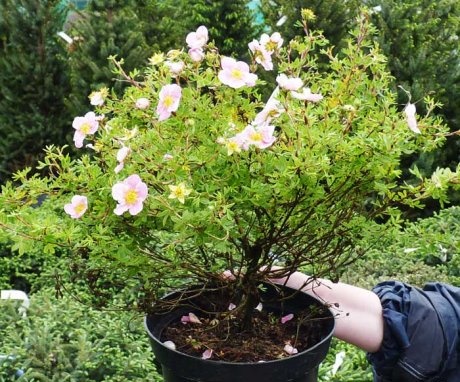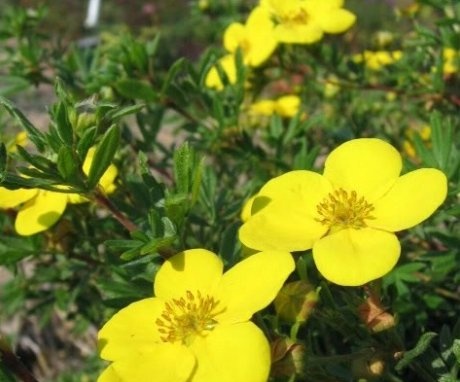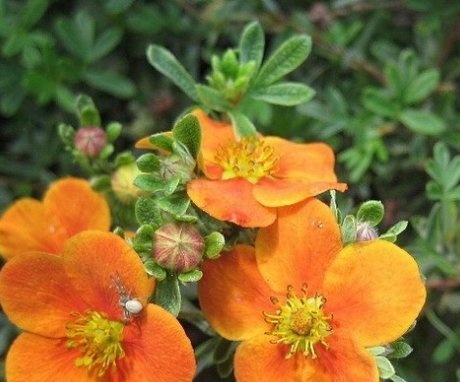Cinquefoil: varieties, planting and plant care
Shrub cinquefoil is an amazingly beautiful shrub belonging to the Rosaceae family. This plant is now called Potentilla, while earlier it was called Dazifora. From time to time, names such as five-leaf tea and Kuril tea are remembered. Why exactly tea? Because once the leaves of Potentilla were used as tea.
Content:
- Types and varieties of Potentilla
- Reproduction of Potentilla
- Growing and caring for Potentilla
- Useful properties of Potentilla
Types and varieties of Potentilla
There is very many types of Potentilla, more than 500 pieces. The plant will become good complement to other flowers in the garden, it blooms for a long time and abundantly, for which gardeners fell in love. Hedge looks completely different if it is decorated with shrub cinquefoil.
Here are some types of Potentilla that are ideal for any garden plot:
- Cinquefoil is stemless. The plant is of a small height of 2-6 cm. It grows well on stony, gravelly soils. Loves sunny sides and moist lands.
- Cinquefoil is shiny. This type of Potentilla will perfectly create a decoration on the site. With its silvery green leaves, the plant mimics a carpet covered in dozens of beautiful pink flowers.
- Altai cinquefoil. The plant reaches a height of 35 cm. It has bright yellow flowers and wide carved leaves.
Dozens of varieties have been bred with flowers of various colors. The fruits of selection, as a rule, bloom much longer and more beautiful than natural species.
Cinquefoil with white and yellow flowers is very fond of the sun. It is more resistant to drought and less capricious in relation to the soil than Potentilla with red and pink flowers.
If you plant several different varieties of Potentilla at once, with different colors, flowering periods and the shape of shrubs, you can get interesting flower arrangements in your garden.
Reproduction of Potentilla
To get new plants, it is enough propagate cinquefoil through its cuttings... They should be cut at the end of June until the end of July. They will take root wonderfully if you put them under a jar or film. It is better to plant them on a permanent site in the spring.
The varieties that spread are best propagated by layering.
You can simply press a branch of the plant against the soil and bury it. But, there is also a third way of reproduction - the division of the bush. It is very important not to let a poorly established bush bloom, which can ruin it.
Growing and caring for Potentilla
Cinquefoil is an unpretentious plant. Quite resistant to winter, drought, loves sunny sides, but can grow in the shade. Cultivation does not require the application of great efforts and costs. The only drawback is that Potentilla is very rarely found on the market.
Light fertilized soils, slightly acidic and alkaline, are well suited for a plant. There is no need to moisten the soil where Potentilla grows too much.
Potentilla will grow and bloom well on fertile soil with diffused lighting.
In the spring, you need to fertilize the soil with mineral fertilizing. Caring for cinquefoil includes periodic sanitary pruning, it is better to carry out it in the month of May. In summer, you can sometimes trim the ends of the branches to keep the crown of the plant thick.In autumn, old shrubs need to be rejuvenated, separate branches must be cut out entirely. It is better to cut off neglected shrubs completely, so they will be best renewed.
It is necessary to loosen and mulch the soil humus, compost or peat. If there is no rain for a long time, then it is necessary to water the cinquefoil, irrigating the crown. It is better to do this in the evening with warm water.
Three important principles that will help to achieve a successful result when growing Potentilla:
- Cinquefoil grows remarkably in sunny places, but it is better to prefer partial shade for planting.
- The soil should be fertile, loose and moderately moist.
- Cinquefoil is good for periodic watering. It is not necessary to allow the soil to dry out too much, but it is also not recommended to overfill with water.
Useful properties of Potentilla
Local residents of the Altai Territory for many centuries use cinquefoil as a medicine... Nomads used Potentilla shoots as a tonic. Tea brewed from the leaves of Potentilla gives the body new strength, develops appetite, improves the condition of the digestive, respiratory, excretory and cardiovascular systems. Statistics show that cinquefoil is an effective, effective and safe remedy used in the treatment of childhood dysbiosis.
Such a widespread use of Potentilla is easy to explain by the fact that it contains the most biologically significant substances. Medicinal properties possess young shoots, which are harvested in the budding and flowering phase.
Thanks to its high selenium content, Potentilla tea is incredibly beneficial for the human body. In the field of herbal medicine, specialists have long been studying the healing properties of Potentilla. Of course, not everything has been fully proven, but it can be argued for sure that Potentilla has a positive effect on the outcome of diseases such as diffuse goiter, hyper- and hypothyroidism.
One very famous and effective drug Endonorm, aimed at preventing and treating thyroid pathologies, was created on the basis of an extract of Potentilla roots.
Potentilla roots are rich in trace elements: iron, silver, copper, iodine, etc. The use of Potentilla has a positive effect on the restoration of hormonal balance and optimization of metabolic processes. But, on the plots, Kuril tea can be cultivated not only for obtaining medicinal raw materials. Cinquefoil is a highly ornamental plant. It is ideal for creating magnificent hedges, alpine mountains, and as an addition to evergreen conifers.
Cinquefoil lends itself easily to haircuts, pleases gardeners with its rapid development, growth and unpretentious care. Thanks to all these advantages, in terms of design and agricultural technology, cinquefoil is one of the most convenient plant species for decorating your backyard plot.
More information can be found in the video.



